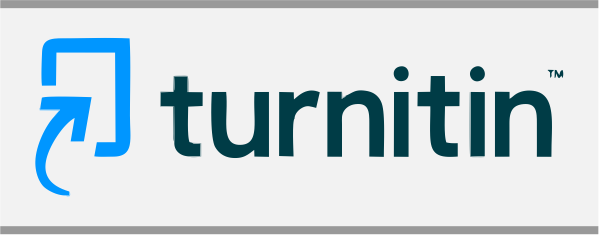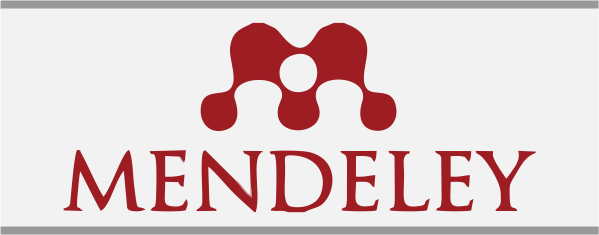TRASH to TREASURE: UTILIZING WASTE MATERIALS AS A MEDIUM of ENGLISH INSTRUCTION
(1) The State Polytechnic of Agriculture Kupang
(2) The State Polytechnic of Agriculture Kupang
(*) Corresponding Author
Abstract
Abstract: It is believed that teaching and learning experiences that involve the learner actively in practical examples are engaged longer than theoretical experiences. Instructional resources are teaching aids or media used to help teachers and students in classroom interaction. These aids help teachers to provide fun, interesting and enjoyable platform (effective presentation) to convey information of a given topic as a means of motivating students to achieve their learning objectives. In general, the present study aims to find out how the teachers in Rijalul Ghad Islamic school in Kera island, Kupang regency, East Nusa Tenggara Province, Indonesia utilized waste materials to support their teaching and learning process in the classroom. The data were collected using classroom observation, semi-structured interview with the teachers as well as the students as the respondents and a list 15-item of questions about the level of application in utilizing instructional media addressed to the teachers and the students. This study reveals that the students were active during the application of the instructional media using waste materials such as papers and drinking mineral bottles. In addition, during the application of the teaching and learning aids, the students also learnt how to work in team during group discussion and how to appreciate other’s opinion. However, a support on the use of teaching aids, especially teacher’s made (or teacher-students’ made) need to be increased among teachers. This is because, not all teachers are able to utilize waste materials in to instructional media
Keywords
Full Text:
PDFReferences
Alobo, J.O. (2010). Towards selection of instructional media for effective teaching and learning of English as a second language in secondary schools. Journal of the Nigeria English Studies Association (JNESA). Vol. 13(2). pp. 106 – 116.
Arum, J.N. (2015). Availability and utilization of instructional materials for the implementation of the new biology curriculum in senior secondary schools in Lagos, Nigeria. Sky Journal of Educational Research. Vol. 3(7), pp. 078 – 086.
Azikiwe, U. (2007). Language Teaching and Learning. Onitsha: Afiricana-First Pubs Ltd.
Brok, D. P., Levy. J., Brekelmans. M., & Wubbels, T. (2005). The Effect of Teacher Interpersonal Behaviour on Students’ Subject-Specific Motivation. Journal of Classroom Interaction. Vol. 40(2). pp. 20 – 33.
Chandra, A., Shah, A & Joshi, U. (1998). Fundamentals of Teaching Home Science. New Delhi: Sterling Publishers, Private Limited.
Damanhuri. E. (2005). Some principal issues on municipal solid waste management in Indonesia. Expert meeting on waste management in Asia-Pacific Islands, Tokyo.
Damanhuri. E. (2010). Informal Collectors of Recyclable Waste and Used Goods in Indonesia. ERIA Research Project Report, No. 10. 3r Policies for East Asia. pp. 71 – 101.
Gagne, R.M., Briggs. L.J., & Wager. W.W. (1992). Principles of instructional design 4th edition. Ted Buchholz. USA.
Hamre, B. K., & Pianta, R. C. (2001). Early teacher–child relationships and the trajectory of children's school outcomes through eighth grade. Child development. Vol. 72(2). pp. 625-638.
Hancock. B., Ockleford. E., Windridge. K. (2007). An introduction to qualitative research. The NIHR RDS EM / YH.
Kemp, J. E. & Daylon, D. K. (1998). Planning and Producing Instructional Media. New York: Harper & Row Publishers.
Kochhar, S.K. (2004). Methods and Techniques of Teaching. New Delhi: Sterling
Leoanak, S. P. P., & Amalo, B. K. (2018a). Teachers’ Beliefs and Perceptions of Code Switching in English as Foreign Language Classroom. In SHS Web of Conferences (Vol. 42, p. 00034). EDP Sciences.
Leoanak, S. P. P., & Amalo, B. K. (2018b). Teacher’s behaviour towards students’ motivation practice. In SHS Web of Conferences (Vol. 42, p. 00078). EDP Sciences.
Makewa, L.N, Role. E, Ngussa. B. (2012). Usefulness of Media Resources in English Instruction: A Case of Adventist Secondary Schools in Tanzania. J. Educ. Pract. Vol. 3(15). pp. 163 – 172.
Manjale, N.B., & Abel. C. (2017). Significance and adequacy of instructional media as perceived by primary school pupils and teachers in Kinondoni District, Tanzania. International Journal of Educational Policy Research and Review. Vol. 4(6). pp. 151-157.
Mehra, V. (1992). Instructional System Design an Innovation in Educational Technology. Delhi: S. S. Publishers.
Mustapha, F. E. et al., (2002). Media Methods in Instruction: An Education Technology Approach. Kano: Rainbow Royale Publishers.
Naz, A.A., & Akbar. R.A. (2010). Use of Media for Effective Instruction its Importance: Some Consideration. Journal of Elementary Education A Publication of Deptt. of Elementary Education IER, University of the Punjab, Lahore – Pakistan. Vol. 18(1-2). pp. 35 – 40.
Newby, T.J., Stepich, D.A., Lehman, J.D. & Russell, J.D. (2000). Instructional technology for teaching and learning: Designing instruction, integrating computers, and using media. (2nd ed.). Upper Saddle River, NJ, Merrill.
Nicola, H., & Nicola, B. (1997). How to Make and Use Visual Aids. London: Heinemann.
Nwike, M.C., & Catherine. O. (2013). Effects of Use of Instructional Materials on Students Cognitive Achievement in Agricultural Science. Journal of Educational and Social Research. Vol. 3 (5). pp. 103 – 107.
Okobia, E.O. (2011). Availability and Teachers’ Use of Instructional Materials and Resources in the Implementation of Social Studies in Junior Secondary Schools in Edo State Nigeria. Review of European Studies. Vol. 3(2). pp. 90 – 97.
Olawale, S. K. (2013). The use of instructional materials for effective learning of Islamic studies. Journal of Jihat al-Islam. Vol. 6(2). pp. 29 – 40.
Omenge, O.R., & Priscah. M.J. (2016). Understanding the Utilization of Instructional Media in Training Health Professionals. Journal of Nursing and Health Science (IOSR-JNHS) Vol. 5(3) Ver. III. pp. 01 – 08.
Patton, M.Q., & Cochran. M. (2002). A guide to using qualitative research methodology.
Reeves, T.C (1998). The impact of media and technology in schools. J. Art and Design Educ. 2. pp. 58 – 63.
Sampath, K., (1990). Introduction to educational technology. New Delhi: Sterling Publishers. Private Limited.
Tuimur, H.N., & Chemwei. B. (2015). Availability and use of instructional materials in the teaching of conflict and conflict resolution in primary schools in Nandi North District, Kenya. International Journal of Education and Practice. Vol. 3(6). pp. 224 – 234.
Vagias, W.M. (2006). Likert type scale response anchors. Clemson International Institute for tourism & research development, Department of Parks, Recreation and Tourism Management. Clemson.
Yeboah, R., Asante. E.A., & Asare, N.A.O. (2016). Teaching Interactive Art Lessons with Recycled Waste Materials as Instructional Resources. Journal of Education and Practice. Vol.7(14). pp. 38 – 59.
Yildrim, K. (2008). A Case Study on the Use of Materials by Classroom Teachers. Educational Sciences: Theory & Practice. Vol. 8 (1). pp. 305 – 322.
DOI: 10.24235/eltecho.v3i1.2590
Article Metrics
Abstract view : 815 timesPDF - 126 times
Refbacks
- There are currently no refbacks.
This Journal is indexed by:

This work is licensed under a Creative Commons Attribution 4.0 International License.







